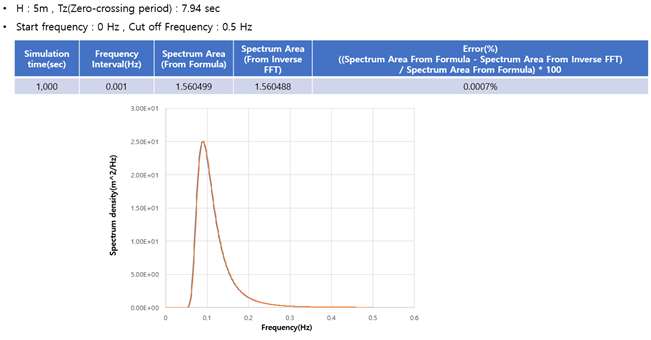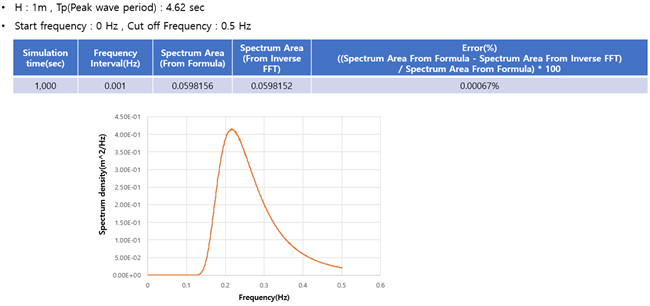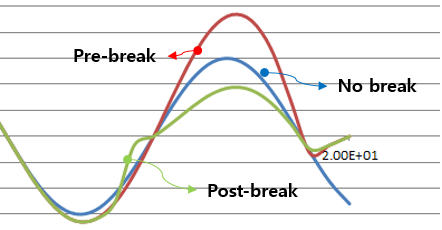Wave breaking
1. As waves travel towards the shore the water depth steadily decreases due to the sloping sea bed, causing the incoming wave to decrease in wave length (wave number increase) and increase in wave height until the wave becomes unstable and dissipates energy through breaking.
Pierson-Moskowitz(H,T)
1. The Pierson-Moskowitz(P-M) spectrum was originally developed based on measured wind
speed and wave elevations for fully developed seas in the North Atlantic. But in
practice, it is more convenient to describe the wave spectrum as a function of
significant wave height, instead of wind speed. In this module, the following definition of
P-M spectrum has been used.
(12–14) |
Where is the wave spectral density,
is the wave frequency,
is the significant wave height and
is the mean zero-crossing period.
2. The wave height is determined by the following formula as a function of the point-x and time-t.
(12–15) |
Where NW is the total wavelet number used, is the wave amplitude,
is the wave number and
is the random phase angle in rage 0 < φ< 2π.





